Introduction to Chicken Parmesan
Why Chicken Parmesan is the Ultimate Comfort Food
When it comes to comfort food, few dishes can compete with the unmistakable charm of Chicken Parmesan. This Italian-American classic not only warms your belly but also evokes a sense of nostalgia and home. The crispy, golden chicken cutlet, layered with rich tomato sauce, gooey mozzarella, and a sprinkle of aromatic basil—what's not to love?
For many, Chicken Parmesan serves as a delightful reminder of family gatherings or cozy dinners. Its versatility means you can easily tweak it to suit your tastes, whether you’re craving a classic version or something a bit more adventurous. As Bon Appétit notes, it’s all about balancing flavors and textures, making every bite a celebration.
Additionally, Chicken Parmesan is surprisingly simple to prepare, making it an accessible option for young professionals who may be short on time but long on appetite. In just a few straightforward steps, you can create a satisfying meal that feels indulgent without needing a restaurant reservation.
So, if you're ready to elevate your weeknight meals and impress your friends or family, get excited! Our easy-to-follow recipe will guide you through the process of crafting your very own Chicken Parmesan masterpiece.
For more tips on mastering comfort foods, check out our favorite culinary resources from Serious Eats and New York Times Cooking.
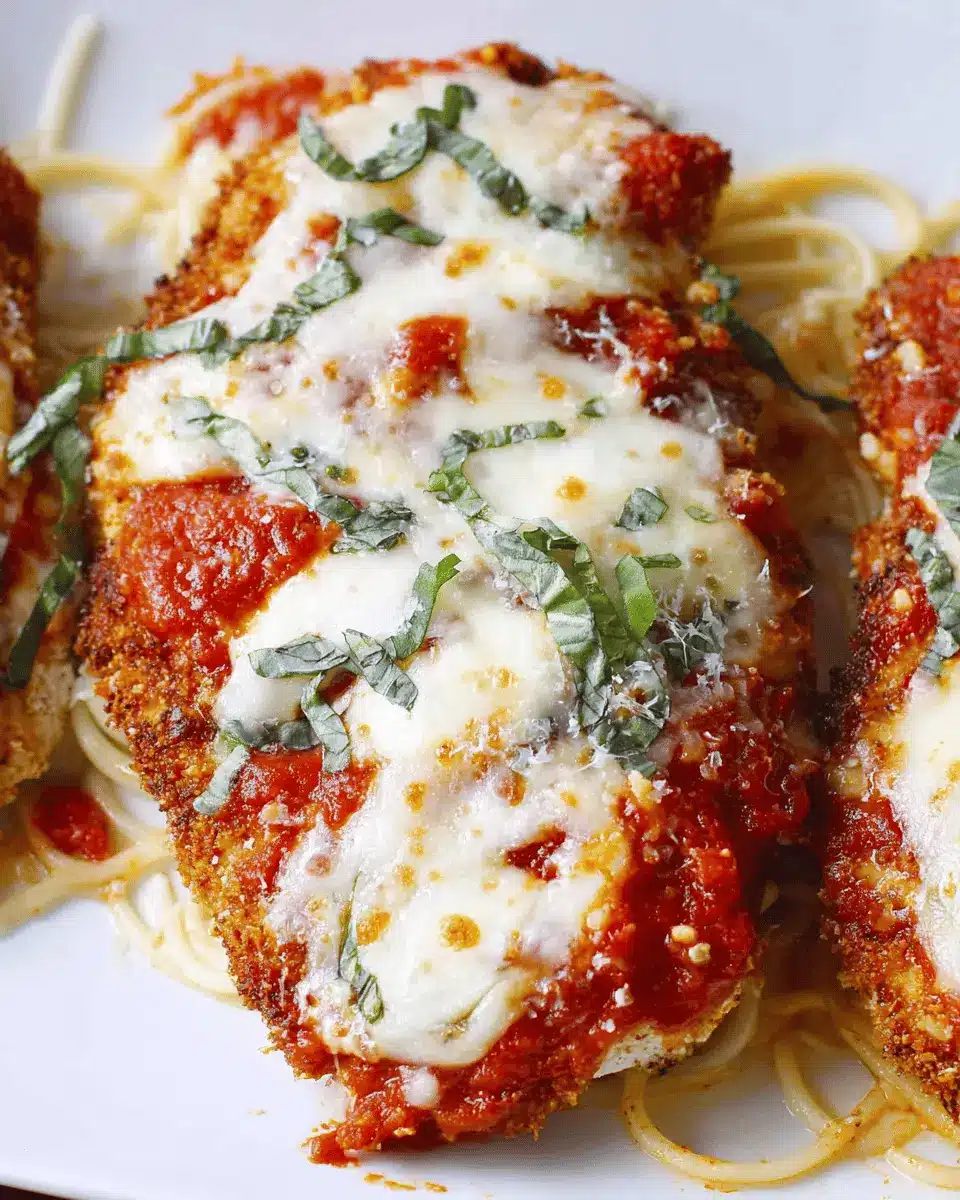
Ingredients for Chicken Parmesan
Cooking Chicken Parmesan is a delightful experience, and gathering the right ingredients is the first step to making this classic dish a hit! Here’s what you’ll need for a delicious meal that serves four.
- 4 skinless, boneless chicken breast halves: These are the star of the show, so choose fresh, high-quality cuts for the best flavor.
- Salt and freshly ground black pepper: Essential for seasoning, these will enhance the natural taste of the chicken.
- 2 large eggs: They’re key to the breading process, helping the crumbs stick to the chicken.
- 1 cup panko bread crumbs: These will give your Chicken Parmesan that perfect crispy texture.
- ¾ cup grated Parmesan cheese: Divide this for both breading and topping—it's what brings that rich umami flavor.
- 2 tablespoons all-purpose flour: A light dusting helps with the breading, creating an enticing crust.
- ½ cup olive oil: For frying, it adds a lovely depth of flavor.
- ½ cup prepared tomato sauce: Use your favorite kind for a burst of flavor.
- ¼ cup fresh mozzarella, cut into cubes: Because everything is better with cheese!
- ¼ cup chopped fresh basil: This provides a refreshing touch.
- ½ cup grated provolone cheese: The gooey goodness that takes this dish over the top.
- 2 teaspoons olive oil: A final drizzle for that golden finish.
Ready to cook? Let’s dive into the directions for this savory masterpiece! For more insights on ingredient sourcing and seasonal options, feel free to check out Food Network or Epicurious.
Preparing Chicken Parmesan
Creating the perfect Chicken Parmesan at home can seem daunting, but with a bit of preparation and the right steps, you'll be enjoying this classic Italian dish in no time. Let’s walk through the process together!
Gather Your Ingredients
Before you begin, let’s collect everything you’ll need. It always helps to have your workspace organized! For this recipe, you’ll be using:
- 4 skinless, boneless chicken breast halves
- Salt and freshly ground black pepper to taste
- 2 large eggs
- 1 cup panko bread crumbs (feel free to adjust as needed)
- ¾ cup grated Parmesan cheese, divided
- 2 tablespoons all-purpose flour (plus more if necessary)
- ½ cup olive oil for frying
- ½ cup prepared tomato sauce
- ¼ cup fresh mozzarella, cut into small cubes
- ¼ cup chopped fresh basil
- ½ cup grated provolone cheese
- 2 teaspoons olive oil
Preheat your oven to 450 degrees F (230 degrees C), and you’re ready to go!
Pound the Chicken Breasts
To ensure even cooking and a tender texture, place your chicken breasts between two sheets of heavy plastic (resealable freezer bags work perfectly). Using a meat mallet, pound the chicken to a thickness of about ½ inch. This step not only makes the chicken thinner and easier to cook but also allows it to absorb flavors more effectively. Did you know that even a little bit of tenderizing can enhance the taste of your Chicken Parmesan?
Season and Coat the Chicken
Once your chicken is pounded, it’s time to add flavor. Season it generously with salt and pepper. In a shallow bowl, sprinkle flour over both sides of the chicken, ensuring an even coating. In another bowl, beat the eggs until smooth, and in a separate dish, mix the panko breadcrumbs with ½ cup of grated Parmesan cheese.
Now, dip each flour-coated chicken breast into the egg mixture, and then transfer to the breadcrumb mixture, pressing the crumbs into the chicken to make sure it sticks. Let the chicken rest for about 10 to 15 minutes to help the coating adhere better.
Heat and Fry the Chicken
In a large skillet, heat about ½ inch of olive oil over medium-high heat. The oil should shimmer when it's hot enough. Carefully add the chicken breasts and fry them for about 2 minutes on each side, until they are golden brown. Remember, the chicken will continue to cook in the oven, so don’t worry about it being fully cooked through at this stage.
Assemble the Dish Before Baking
Now comes the fun part! Transfer the fried chicken to a baking dish, and pour 2 tablespoons of tomato sauce over each piece. Layer the chicken with equal amounts of mozzarella, fresh basil, and provolone cheese. To top it off, sprinkle the remaining Parmesan over everything, then drizzle each chicken breast with about ½ teaspoon of olive oil.
Once everything is assembled, it's time for the oven. Bake for 15 to 20 minutes, or until the cheese is bubbly and golden brown, and the chicken reaches an internal temperature of 165 degrees F (74 degrees C).
And there you have it! Your homemade Chicken Parmesan is ready to be enjoyed. This dish pairs wonderfully with a side of pasta or a fresh salad.
For more delicious recipes and culinary tips, check out Serious Eats or Bon Appétit for inspiration!
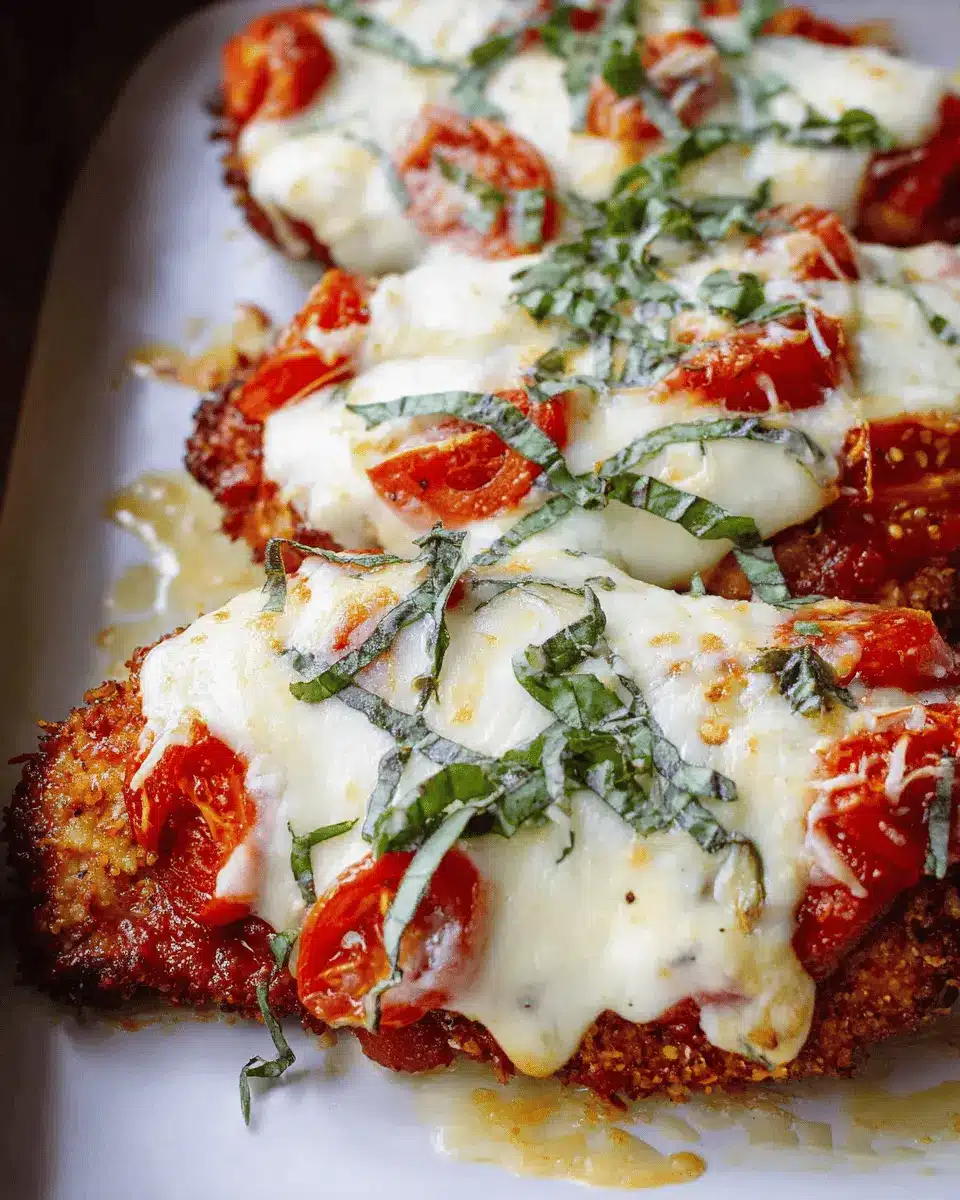
Variations on Chicken Parmesan
Chicken Parmesan with a Twist: Spinach and Artichoke
Looking to jazz up your classic Chicken Parmesan? Try adding a spinach and artichoke topping! Sauté chopped garlic, fresh spinach, and artichoke hearts together until wilted, then mix in a bit of cream cheese for that creamy texture. Spread it over the baked chicken before layering on the cheese for a delightful twist that’s both hearty and flavorful. This variation not only tastes amazing but also adds a nutritious punch to your meal!
Healthy Chicken Parmesan: Baked Instead of Fried
For those mindful of their health, consider a baked version of Chicken Parmesan. Simply skip the frying step and bake the breaded chicken for a crispy finish with less oil. Using an air fryer can also yield fantastic results! Just season your chicken, coat it in breadcrumbs, and pop it in the oven or air fryer until golden. This version pairs excellently with a side salad or whole-grain pasta for a balanced meal. Who says you can’t enjoy comfort food while keeping it healthy?
Cooking Tips for Chicken Parmesan
When making Chicken Parmesan, the key to juicy, flavorful chicken is in the pounding. Ensure your chicken breasts are evenly flattened to about ½ inch; this allows for quick cooking and even browning. Remember to let the breaded chicken rest before frying—this helps the coating stick better!
Use panko bread crumbs for that satisfying crunch and don’t skimp on the cheese. A mix of Parmesan and freshly shredded mozzarella is essential for that cheesy, gooey finish. Finally, don’t forget to monitor the baking time closely; overcooking can dry out your chicken. Enjoy your homemade Chicken Parmesan!
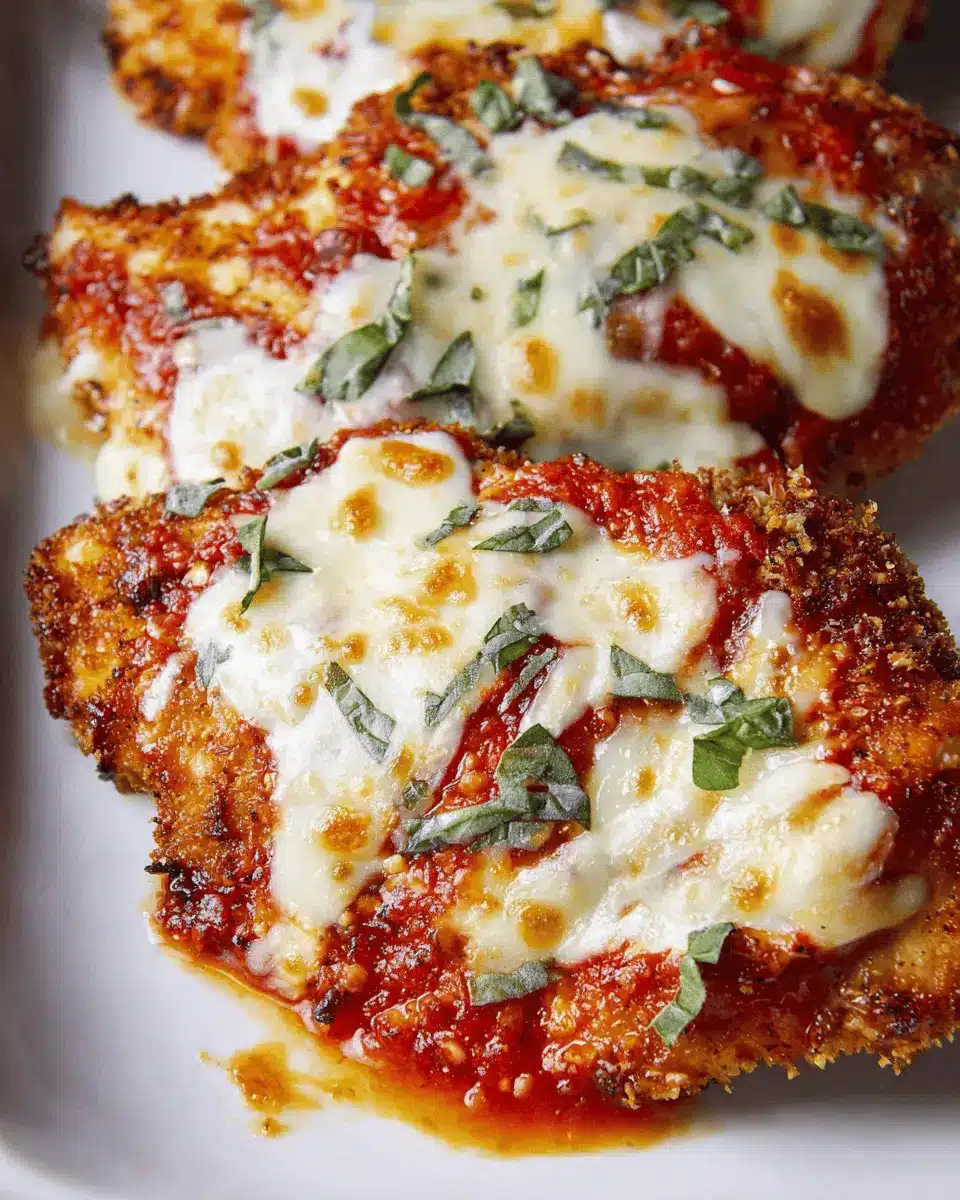
Serving Suggestions for Chicken Parmesan
When it comes to serving Chicken Parmesan, the possibilities are delightful! Here are some tasty ideas to elevate this classic dish:
-
Pasta Pairing: Serve your Chicken Parmesan atop a bed of spaghetti or fettuccine tossed in marinara sauce. The sauce's warmth complements the crispy chicken nicely.
-
Salads on the Side: A fresh, vibrant arugula or Caesar salad can add a great contrast. The greens balance out the richness of the cheese and sauce.
-
Breads and Dips: Offer garlic bread or a light bruschetta on the side. Dipping into some extra tomato sauce or basil pesto can enhance the meal’s flavor.
-
Cooking Alternatives: Don’t forget that you can try baking or air-frying for a healthier version of Chicken Parmesan!
Experimenting with these suggestions can make your dinner not just satisfying but also a little creative and fun. Enjoy!
Time Breakdown for Chicken Parmesan
Preparation Time
Getting everything ready for your Chicken Parmesan takes about 20 minutes. This includes gathering your ingredients and prepping the chicken. Don’t rush this process—taking time to pound the chicken and coat it properly can make a big difference in texture and flavor.
Cooking Time
Once prepped, the cooking portion of the recipe will take roughly 25 minutes. This includes frying the chicken to golden perfection and baking it until the cheese is bubbling and deliciously brown. You will be rewarded with an amazing aroma wafting through your kitchen!
Total Time
In total, you’ll spend around 45 minutes from start to finish for this Chicken Parmesan dish. Perfect for a weeknight meal or a cozy dinner with friends, you’ll whip up something truly impressive without stealing too much of your evening. Check out more tips on efficient meal prep at The Kitchn.
Remember, cooking can bring joy to your day—and this Chicken Parmesan is sure to be a crowd-pleaser!
Nutritional Facts for Chicken Parmesan
Calories
A serving of Chicken Parmesan typically contains around 500 calories, making it a hearty option for dinner. It’s worth noting that the calorie count can vary based on portion size and added ingredients.
Protein
One of the standout aspects of Chicken Parmesan is its protein content. You can expect to get about 40 grams of protein per serving, which is fantastic for muscle repair and overall health.
Sodium
While Chicken Parmesan is undeniably delicious, it does come with about 800 mg of sodium per serving. If you’re watching your sodium intake, consider using low-sodium cheese and sauces to keep those levels in check.
For more information on balanced meals and nutrition, check out resources from the U.S. Department of Agriculture or Nutrition.gov.
FAQs about Chicken Parmesan
Can I use chicken thighs instead of breasts?
Absolutely! Using chicken thighs can add a juicier texture and deeper flavor to your Chicken Parmesan. Thighs tend to stay tender and moist during cooking, making them a fantastic alternative if you prefer a richer taste. Just be mindful that they may take a couple of extra minutes to cook through, so keep an eye on them!
How can I make Chicken Parmesan gluten-free?
It’s easy to make a gluten-free version of Chicken Parmesan! Simply replace the panko bread crumbs with gluten-free breadcrumbs or crushed gluten-free crackers. You can also use almond flour for a nutty twist. Just check that all sauces and cheeses are certified gluten-free to keep your dish safe and delicious.
What sides pair well with Chicken Parmesan?
For a delightful meal, consider serving your Chicken Parmesan with:
- Garlic bread – A classic choice to soak up those savory tomato sauces.
- Side salad – A fresh arugula or Caesar salad adds a nice crunch.
- Pasta – Spaghetti or fettuccine tossed in olive oil or marinara complements the dish beautifully.
Pairing these sides with your Chicken Parmesan can elevate your dining experience!
Conclusion on Chicken Parmesan
Chicken Parmesan is a delightful dish that brings comfort and satisfaction to your dinner table. With just the right balance of crispy, cheesy, and savory, it’s a meal that can impress even the fussiest of eaters. So grab the ingredients, gather your friends, and enjoy a delicious night in!
For more tips on cooking chicken or other delectable Italian recipes, consider checking out this article on authentic Italian cuisine. And remember, a great meal often starts with good company!
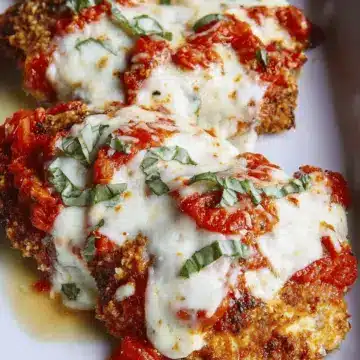
Chicken Parmesan Made Easy: A Comforting Homemade Delight
Equipment
- Skillet
- baking dish
- Meat Mallet
- shallow bowl
- Sifter
- Cooking Thermometer
Ingredients
Chicken and Breading
- 4 pieces skinless, boneless chicken breast halves
- to taste salt
- to taste freshly ground black pepper
- 2 large eggs
- 1 cup panko bread crumbs or more as needed
- ¾ cup grated Parmesan cheese divided
- 2 tablespoons all-purpose flour or more if needed
- ½ cup olive oil for frying, or as needed
- ½ cup prepared tomato sauce
- ¼ cup fresh mozzarella cut into small cubes
- ¼ cup chopped fresh basil
- ½ cup grated provolone cheese
- 2 teaspoons olive oil
Instructions
Cooking Instructions
- Gather the ingredients. Preheat an oven to 450 degrees F (230 degrees C).
- Place chicken breasts between two sheets of heavy plastic (resealable freezer bags work well) on a solid, level surface. Firmly pound chicken with the smooth side of a meat mallet to a thickness of ½-inch.
- Season chicken thoroughly with salt and pepper. Using a sifter or strainer, sprinkle flour over chicken breasts, evenly coating both sides.
- Beat eggs in a shallow bowl and set aside. Mix bread crumbs and ½ cup Parmesan cheese in a separate bowl, set aside. Dip a flour-coated chicken breast in the beaten eggs. Transfer breast to the bread crumb mixture, pressing crumbs into both sides. Repeat for each breast. Let chicken rest for 10 to 15 minutes.
- Heat ½ inch olive oil in a large skillet on medium-high heat until it begins to shimmer. Cook chicken in the hot oil until golden, about 2 minutes per side. The chicken will finish cooking in the oven.
- Transfer chicken to a baking dish. Top each breast with 2 tablespoons tomato sauce. Layer each chicken breast with equal amounts of mozzarella cheese, fresh basil, and provolone cheese. Sprinkle remaining Parmesan over top and drizzle each with ½ teaspoon olive oil.
- Bake in the preheated oven until cheese is browned and bubbly and chicken breasts are no longer pink in the center, 15 to 20 minutes. An instant-read thermometer inserted into the center should read at least 165 degrees F (74 degrees C).

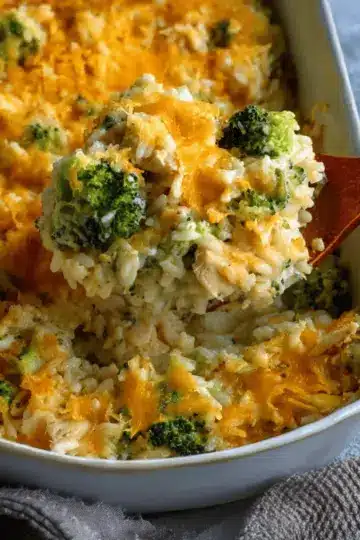
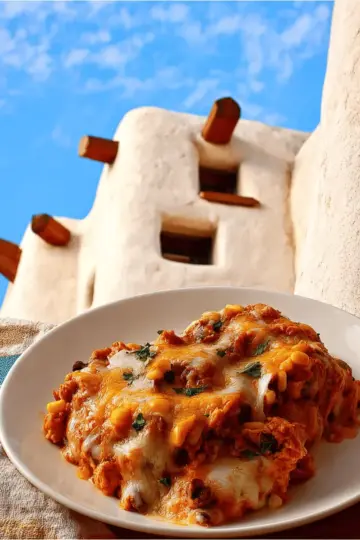

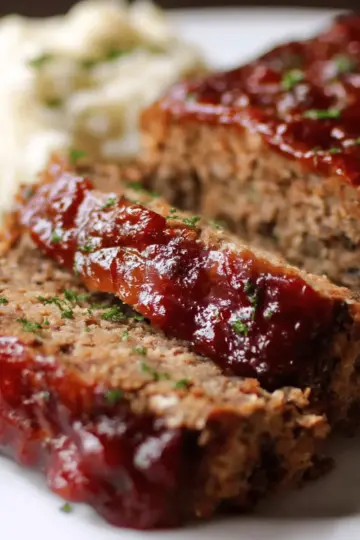
Leave a Reply